


2005 Proceedings




2005 Photos

 




Other Years




















|
|
Photo Album of the
Stereoscopic Displays and Applications XVI (2005) Conference
The Demonstrations
This year's demonstration session was the biggest yet. A wide range of stereoscopic displays and systems were on show and a very enthusiastic audience kept the exhibitors on their toes for the full duration of the session (and more).
The following demonstrations were on show:
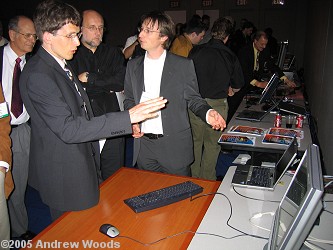 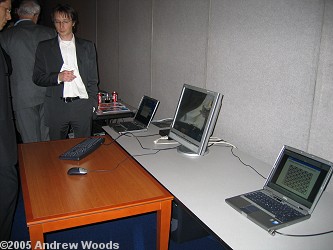
| |
[1a,1b] Robert-Paul Berretty and Frans Peters from Philips (Netherlands) demonstrated a new Philips multi-view autostereoscopic display based on a switched lenticular lens array filled with liquid crystal.
|
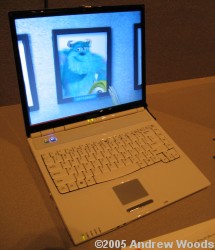 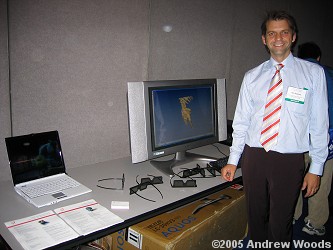
| |
[2a,2b] Nic Beames from Dynamic Digital Depth (Australia and USA) demonstrated DDD software "TriDef Autostereo 3D tools" and "TriDef Player" on a newly released Sharp Mebius PC-AL3DH autostereoscopic 3D laptop, and a 30" ÁPol 3D LCD display from Arisawa (Japan), viewed using polarized 3D glasses.
|
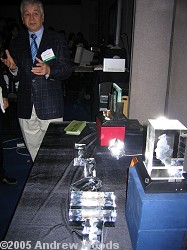 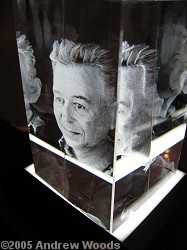
| |
[3a,3b] Igor Troitski demonstrated a large selection of laser-induced volumetric images inside crystals.
|
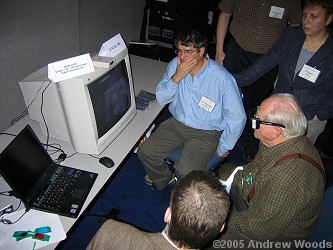
| |
[4] RAFAEL (Israel) demonstrated automatic video-to-stereoscopic-video conversion software.
|
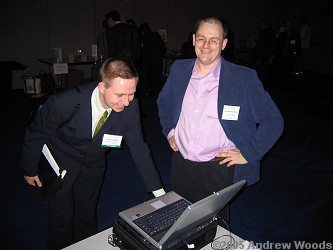
| |
[5] Nick Holliman from University of Durham (UK) demonstrated new methods for creating stereoscopic images with controlled perceived depth on a Sharp RD3D laptop.
|
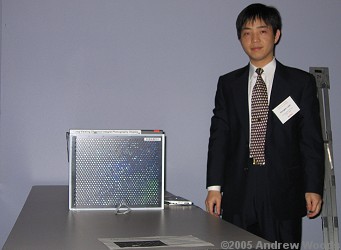
| |
[6] Hongen LIAO from University of Tokyo (Japan) demonstrated a long viewing distance integral photography autostereoscopic display.
|
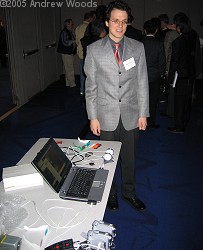 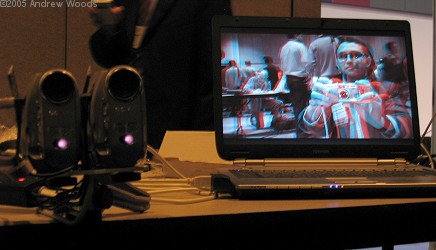
| |
[7a,7b] Peter Wimmer from Johannes Kepler University (Linz, Austria) demonstrated his shareware "Stereoscopic Player" and "Stereoscopic Multiplexer" software. Connected to his laptop were a stereo-pair of Sony handycams and also a stereopair of USB web-cam eye-ball cameras that were set up to show live stereoscopic video on the laptop screen in anaglyph format. [If you look at the computer display in the right hand image with red/cyan glasses you'll see the photographer in 3D.]
|
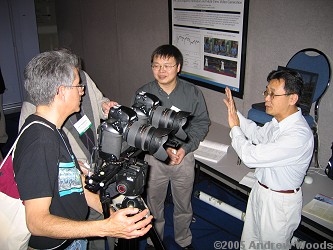
| |
[8] Liang Zhang and James Tam from Communications Research Centre (CRC) (Canada) demonstrated the results of their study into disparity estimation and multi-view video generation. Also pictured here is Abe Perlstein with his twin Nikon camera rig.
|
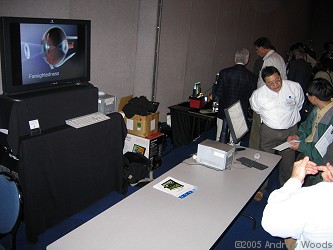
| |
[9] Mark Feldman from StereoGraphics (California) demonstrated their "SynthaGram 404" (40" autostereoscopic LCD), "SynthaGram 202" (20" autostereoscopic LCD) and their Photoshop "3D imaging" plug-in.
|
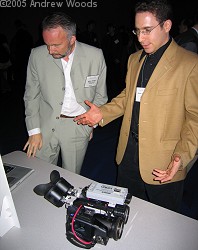 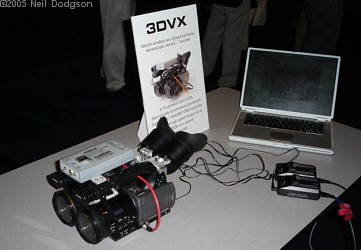
| |
[10a,10b] Jason Goodman from 21st Century 3D (New York) demonstrated the "3DVX" stereoscopic video camera.
|
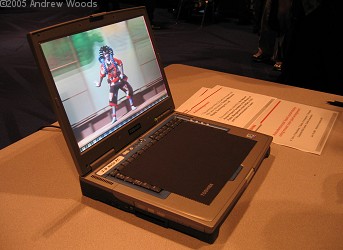 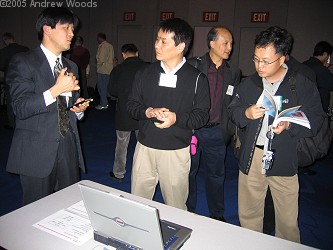
| |
[11a,11b] Kazuki Taira from Toshiba Corporation (Japan) demonstrated a prototype autostereoscopic display on a Toshiba notebook computer.
|

| |
[12] Alan Sullivan from Lightspace Technologies (Connecticut) demonstrated the DepthCube 3D volumetric display.
|

| |
[13] John Miller and Brad Nelson from Dep3D (California) demonstrated a variety of stereoscopic PC games and applications on their 40" dual rear projection circular polarized stereoscopic display.
|
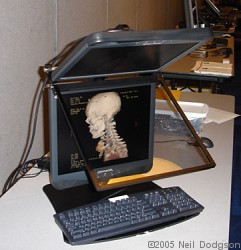 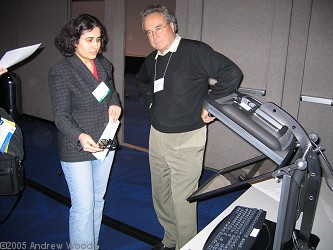
| |
[14a,14b] Scott Robinson and Chuck McLaughlin from Planar Systems (Oregon) and McLaughlin Consulting Group (California) demonstrated the StereoMirror 3D display.
|
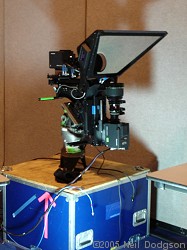 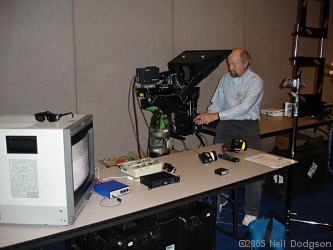 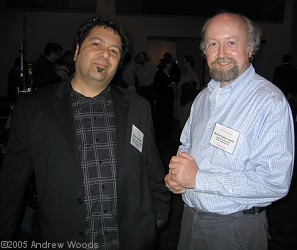
| |
[15a,15b,15c] Steve Schklair and Bernie Butler-Smith from Cobalt Entertainment (California) demonstrated their dual 720P high-definition stereoscopic video camera.
|

| |
[16] Andrew Woods from Curtin University of Technology (Australia) and Tony Hall from Welaptega Marine Ltd (Canada) demonstrated their 4000m depth rated underwater stereoscopic video camera. Some example stereoscopic video footage filmed with the underwater camera was played back from a field-sequential 3D DVD on a Sharp RD3D autostereoscopic laptop.
|
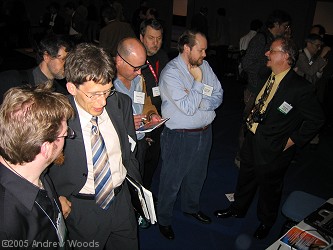 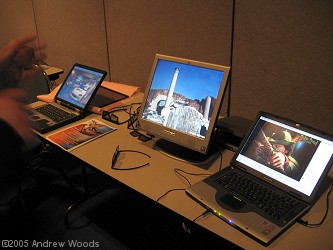
| |
[17a,17b] Steven Smith from VRex Malaysia and Mike Roche from VRex USA introduced the "AutoBin Clipon," a product that allows for the after-market attachment, via a magnetically enabled frame, of either a TNÁPol (twisted nematic micro-polarizer) or a two-view autostereoscopic parallax barrier to allow a standard LCD to be used for stereoscopic display. Introduced also was a 17" TNÁPol micro-polarizer, which allows a range of 17" consumer LCD displays to be used for stereoscopic display. They also demonstrated SterVu TM - a 2D to 3D image conversion software suite.
|
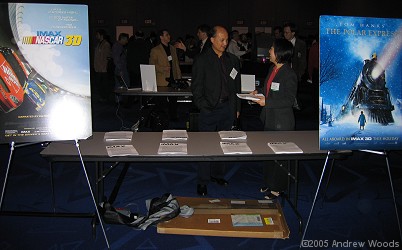
| |
[18] Samuel Zhou from IMAX Corporation (Canada) provided a range of technical literature about the IMAX 3D process and showed movie posters from two recent IMAX 3D movies: "The Polar Express" and "NASCAR 3D".
|
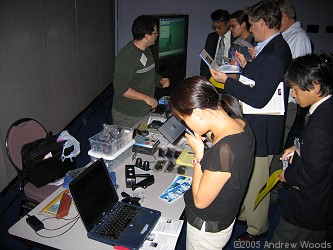 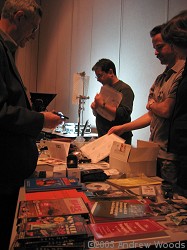
| |
[19a,19b] Steve Berezin from Berezin Stereo Photography (California) demonstrated a wide variety of consumer stereoscopic products, including various 3D glasses, viewers, books and software.
|
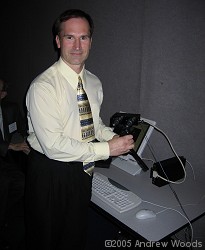 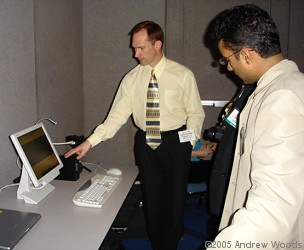
| |
[20a,20b] Chris Chaleki from Progressive 3D (Maine) demonstrated a digital stereoscopic video camera (1024x768 x2) with camera-link interface.
|
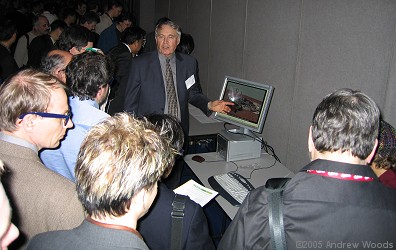 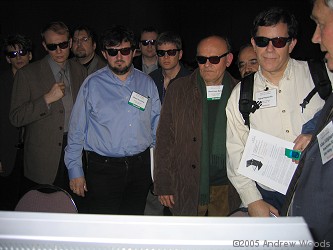
| |
[21a,21b] Alan Silliphant from Anachrome 3D (California) demonstrated the Anachrome 3D glasses and images.
|
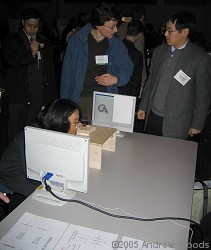 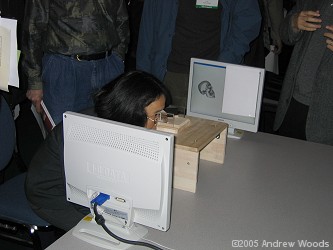
| |
[22a,22b] T. Akutsu (University of Tsukuba, Japan) showed a stereoscopic display in support of his paper "Stereoscopic display which shows 3D natural scenes without contradiction of accommodation and convergence".
|
3D Phantogram Exhibit
This year the conference and symposium hosted the largest ever exhibition of 3D Phantograms. Phantograms are a relatively new "3D art form" which place realistic three-dimensional images within hand's reach of the observer. In some ways like a hologram, but in other ways not, phantograms use conventional stereoscopic display technology in a special way to present images that are enchanting. The 3D Phantogram Exhibit was organised by Terry Wilson and Andrew Woods. The exhibit was very popular - so popular that we nearly ran out of glasses on the first day and had to ration them thereafter.
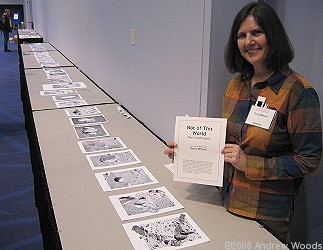 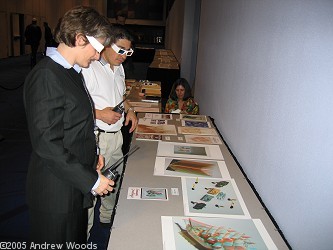
| |
[23,24] (left) The largest series of images in the phantogram exhibit were a collection of phantograms of the Mars surface developed by Terry Wilson from images taken by the two NASA Mars Rovers "Spirit" and "Opportunity". Here Terry Wilson is pictured with the collection which was titled "Not of This World". These phantograms were a perfect accompanyment to the plenary talk presented by Dr Justin Maki, from Jet Propulsion Laboratory, titled "20 Cameras on Mars: The Mars Exploration Rover Imaging System".
(right) The exhibit was not only impressive from the large number and high quality of images on display, but the exhibit also presented the work of a wide selection of authors and artists: Achim Bahr (Germany), Boris Starosta (USA), Steve Aubrey (USA), Owen (Wes) Western (USA), John Adlersparre (Canada), Gilbert Detillieux (Canada), Takashi Sekitani (Japan), Steve Hughes (USA), Terry Wilson (USA), and Andrew Woods (Australia).
|
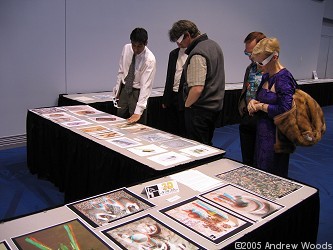 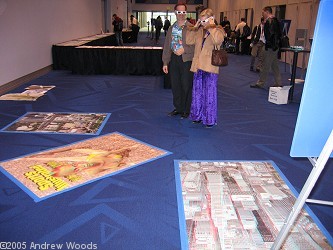
| |
[25,26] (left) more table-top phantograms and (right) floor mounted phantograms.
|
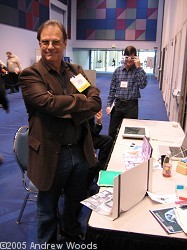 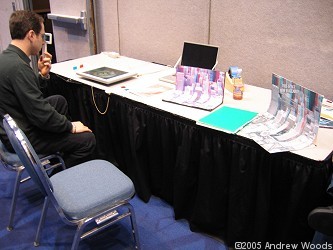
| |
[27,28] Steve Aubrey demonstrated his "sweep" phantograms and also an animated phantogram (using an LCD monitor mounted flat on the table-top).
|
All photographs © 2005 Andrew Woods unless otherwise noted.
Higher resolution images available upon request.
|









































